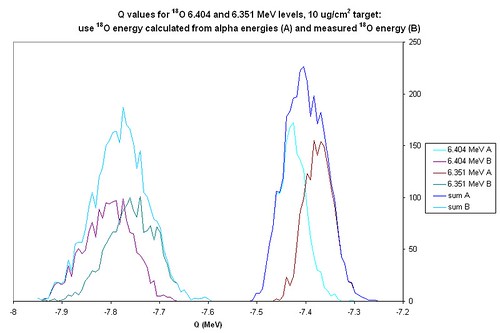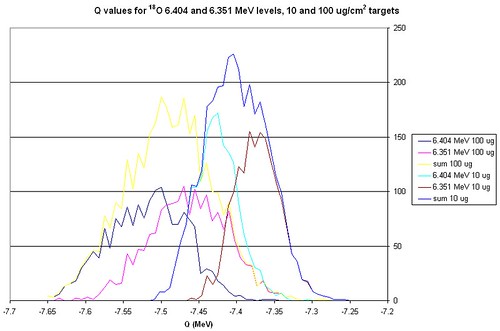First, use 10 μg/cm2 target, and compare different ways of calculating the Q-value: use the measured energies for both alphas and the 18O, and also deduce the 18O energy from the measured alpha energies. results:

It's clearly better to just use 18O as a tag, and not attach any significance to its measured energy, since it's subject to a lot of energy loss/straggling in the target (even at 10 μg/cm2). All cool.
Now compare two target thicknesses: 10 μg/cm2 and 100 μg/cm2. Use the alphas-only Q-value calculation method. results:

What that says to me is that even at 100 μg/cm2 it should be possible to see the presence of the 6.351 MeV level: the difference in energies/Q values is about 55 keV, and at 100 μg/cm2 the peak width is about 51 keV (while at 10 μg/cm2 it's only about 30 keV)--so if the 6.351 MeV level is populated, it will either produce a tail on the 6.404 peak or will broaden it noticeably.
Comments? Thoughts?
Coming up next: Contaminants!
No comments:
Post a Comment